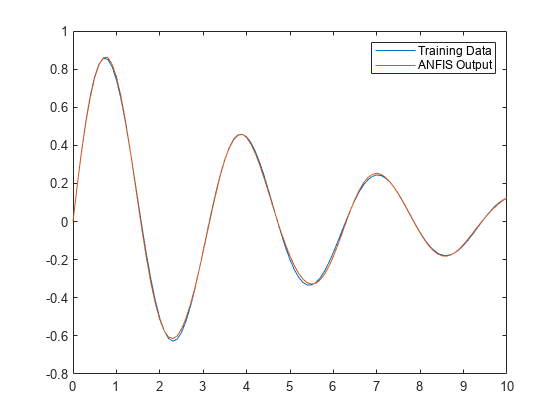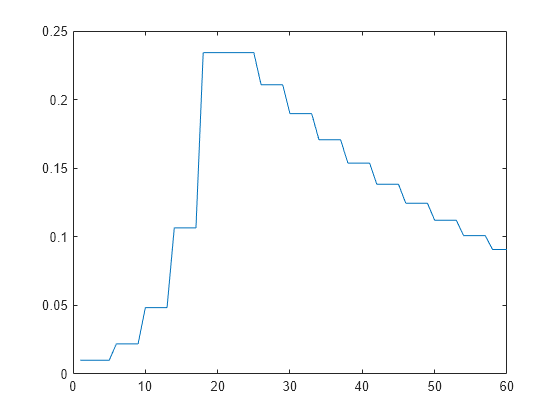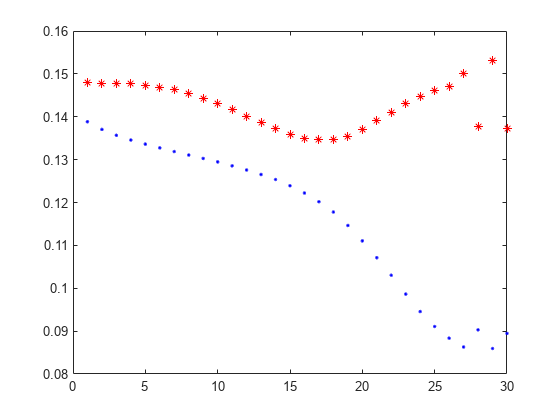anfis
Tune Sugeno-type fuzzy inference system using training data
Syntax
Description
fis = anfis(trainingData)
The training algorithm uses a combination of the least-squares and backpropagation gradient descent methods to model the training data set.
fis = anfis(trainingData,options)
An initial FIS object to tune.
Validation data for preventing overfitting to training data.
Training algorithm options.
Whether to display training progress information.
[ returns the root mean squared training error for each training
epoch.fis,trainError]
= anfis(___)
[ returns the training step size
at each training epoch.fis,trainError,stepSize]
= anfis(___)
[
returns the validation data error for each training epoch,
fis,trainError,stepSize,chkFIS,chkError]
= anfis(trainingData,options)chkError, and the tuned FIS object for which the
validation error is minimum, chkFIS. To use this syntax,
you must specify validation data using
options.ValidationData.
Examples
Input Arguments
Output Arguments
Alternative Functionality
tunefis Function
Starting in R2019a, you can tune a fuzzy system using tunefis. This function provides
several other options for tuning algorithms, specified by the tunefisOptions
object.
To use ANFIS, specify the tuning algorithm as "anfis" in
tunefisOptions. Then, use
the options object as an input argument for tunefis. For example:
Create the initial fuzzy inference system, and define the tunable parameter settings.
x = (0:0.1:10)';
y = sin(2*x)./exp(x/5);
options = genfisOptions('GridPartition');
options.NumMembershipFunctions = 5;
fisin = genfis(x,y,options);
[in,out,rule] = getTunableSettings(fisin);Tune the membership function parameters with "anfis".
opt = tunefisOptions("Method","anfis"); fisout = tunefis(fisin,[in;out],x,y,opt);
Fuzzy Logic Designer App
Starting in R2023a, you can interactively tune an ANFIS system using the Fuzzy Logic Designer app. For an example, see Train Adaptive Neuro-Fuzzy Inference Systems.
References
[1] Jang, J.-S. R. "Fuzzy Modeling Using Generalized Neural Networks and Kalman Filter Algorithm." Proceedings of the Ninth National Conference on Artificial Intelligence (AAAI-91). (July 1991): 762–767.
[2] Jang, J.-S. R. "ANFIS: Adaptive-Network-based Fuzzy Inference Systems." IEEE Transactions on Systems, Man, and Cybernetics 23, no. 3 (May 1993): 665–685.




